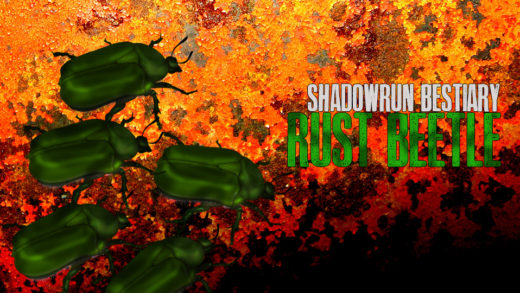I’ve written a number of adventures, characters, and various supplements for free use. These days self-publishing and selling is easier than ever. Despite the ease, there are costs and risks involved. And, with anyone able to sell their ideas, it can be difficult to gain attention in the marketplace.
Dolla, Dolla Bills, Y’all
There’s no doubt in my mind that no one goes into tabletop RPG writing for its profit-making potential. Whether crafting a $60 hard cover source book to writing a small column or stat block on the Internet, creating this content is a labor of love. There are easier and less risky ways of making money than trying to tap into a niche market at the right time with the right idea. Deciding to sell ttrpg settings and supplements is akin to opening a new restaurant. Even if it’s good, profit is never guaranteed.
Sites such as itcho.io, Dungeon Master’s Guild, and Drive Thru RPG allow creators to sell their content digitally. Services like Patreon, PayPal Donations, and ko-fi offer methods of support for those who provide their content for free. Writing takes time and creative energy, and money not only acts as recognition from the purchaser/supporter, but is also important for one’s continued existence in a late capitalism society.
Most of what I’m writing about in the below refers to producing and selling self-published content. Much of the content does apply to any form of ttrpg writing, but the focus for this week’s column is specifically on the creation of digitally distributed and/or print-on-demand PDFs for sale.
Barely Legal
Note: I’m not a lawyer and what I’ve written are guidelines based on my research.
When thinking about writing materials for a game, specifically with the intent to sell, there’s also the question of what system to create for. Some publishers or licenses do not allow third party/independent creations and it’s important to note what kinds of creations could end up resulting in a Cease and Desist order or worse. The Angry GM wrote this article that discusses creating 3rd party content compatible with D&D 5e. So, unless the content planned is generic enough to work with any system or is wholly original, it’s critical to ensure you’re not stepping on any IP or legal toes.
Generally speaking, it seems to be enough to obtain copyright by virtue of being the first to publish it, even digitally. Intellectual property laws largely have a “right of first.” Like art theft, it’s possible for another individual to copy someone’s work and re-sell it as their own, and court battles may prove cost prohibitive. If the other seller is going through the same channel as the original work then system admins may be able to arbitrate before it comes to court fees. For larger works, like original game systems or mechanics, it might be worth setting up a copyright for the rules with the Library of Congress.
Scheduling and Putting in the Time
Before actually writing the product, it’s important to establish a scope and plan a deadline. The smaller the project the easier this will be. A three-page extension to a game has its scope built in. A larger adventure or rules system will require a bit of pre-thinking to organize the structure of the document. Knowing what is to be written helps ensure that, should new ideas come about, they aren’t continuously added to the project, creating a feature creep and unwieldy tome that no one could pay for or follow. Save the ideas for future products or expansions. That’s why thinking of a deadline (and keep it adaptable) is also important. It sets goalposts and indicates progress. Creating should be treated like any other project in the real world: with a plan.
If the product is anything more than a list or story then it implements new rules or adds variety to existing rules. If that’s the case then it’s important to make sure that these new systems are balanced, fair, and fun. That requires playtesting. Some things can be playtested by the writer, but for most rules, it’s always best to get a set of fresh eyes who might find ways to use the feature to break the system or find players who don’t understand the rules well enough to use them effectively. I encourage non-creator playtesting of even the smallest rule change. Friends will usually do this for free, especially with the promise of the new rule(s) being added to an ongoing campaign.
Don’t be afraid to re-write or redraft the work if something is proven broken in playtesting. Re-examine the schedule and adjust accordingly. If you’ve promised deadlines then make sure to provide date updates and reset expectations.
Spending Money to Make Little
In addition to the time it takes to write a new game or supplement, additional investments must also be made. A working computer may seem obvious, but the computer needs to be at least powerful enough to run the software needed to lay out and create PDFs. A smartphone is not enough to cover it. While there are some free desktop publishing software options, they may have limited functionality or come with a steeper learning curve—and, for first-time users there will be a learning curve, regardless of the software. When getting used to the ins-and-outs of desktop publishing, writers may find it useful to purchase templates for their use; many gaming-centric templates have been made available and does mean one less step in the process of going from idea to actualization… though content formatting to fit the page may still remain a challenge.
Images are also important and, unless the writer(s) are also artists any images used must be correctly acquired and licensed for sale. Drive Thru RPG has a Stock Art section where art may be purchased or available at a “Pay What You Want” rate. Art should be selected vary carefully and, of course, the cheaper the art, the greater the chance it’s been used elsewhere which can diminish how well a given product stands out on a digital storefront. The ideal option is to commission art directly, but this can add time and greater expense. It may be possible to get a discount on bulk commissions, but this takes time from the artist being able to work on any other projects. (I’ll quickly remind/point out that promising the artist “exposure” just makes the requester a jerk and shouldn’t even be mentioned.)
Spell checkers and automated grammar-checkers only do so much. Bringing in an editor/proofreader to verify consistency and clarity can help ensure the purchasers understand what they’re reading; reducing potential negative reviews. The larger the project, the more important and, in turn, more costly this can be. This can vary in price and finding an editor who knows RPGs will probably help keep overall pricing/questions down. One place to start looking for editors is the Game Freelancing forum on RPGnet.
To Market, To Marketing
One the product is available for purchase the next phase of work begins. Advertising. There are hundreds of ttrpg products released digitally every week and it’s easy for a release to be lost in the sea. This means promoting the product in every way possible… while riding the balance of not seeming pushy or needy. I’ve seen creators offer contests for coupons, play with sales and pricing, and generally promote on every piece of social media. The key seems to be a combination of high traffic and good reviews.
My Plans
I’ve been thinking about writing this “Selling Out” column for a while, potentially interviewing some of the creators I follow on Twitter and tabletop.social; but everything really came to a head when I decided to write and sell a full tabletop rpg system and setting of my own design.
I’ve written a few RPG systems since I started gaming. Most aren’t worth mentioning and I wrote them in middle school and high school. Twenty years ago I began work on a gaming system that, even today, seems balanced and promising—if in need of some polish, re-work, and playtesting. I was going to use this new system in collaboration with a fledgling gaming collaborative in Houston. After the group fell apart, I never really thought I’d use the system again.
The world I created for my NaMoWriMo project in 2019 was one I’ve been working on for ten years, in various phases. As I was reading through all my notes it dawned on me that the mechanics of the system and the fiction of the world meshed together perfectly.
It’s one thing to have a set of rules in one’s head than it is on paper. My unofficial War of the Dark Crystal write-up was a fair amount of work, but creating a new rule system and writing it with an original setting dwarfs that endeavor. I want to create this new product, but it’s too large to do it for free. I’m just hoping that, once its all said and done, it at least pays for itself.
I don’t want to give away too much yet, but my current plans are to finish drafting and playtesting the rules in Q1-Q2 and write the core setting in Q3 in this year. Q4 is the holiday season, but I plan on incorporating additional rules and options during that time. If all goes to schedule, I may Kickstart or somehow determine how to fund original artwork and editing with a plan for a EOY 2021 release. I’m still in the scoping phase to determine if one year is enough time, given that I still have to work, have a life, and want to continue with both this site and my current RPG campaign. But, even though I may have to work through my timeline, I will be selling a game of my own design.



Recent Comments